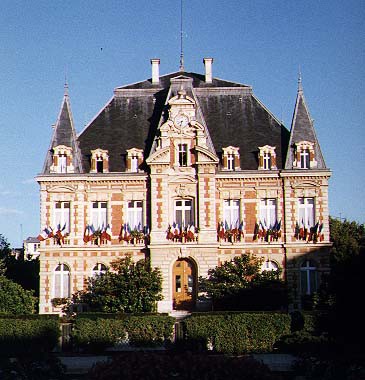The former town hall of Rueil-Malmaison, built in 1868 by the architects Lebois and Prince in imitation of that in Fontainebleau, is now the present home of a museum (inaugurated in 1982) dedicated entirely to the history of the town. Malmaison old town hall was opened by Napoleon III on 1st September, 1869, and on that occasion an official decree was passed granting Rueil-Malmaison its own coat of arms. The heraldic composition comprises an image of Malmaison château combined with the hydrangea (from the French “Hortensia”) of Queen Hortense, and a gilt “N” surmounted by a shining star representing the Napoleonic dynasty.
The first thing the visitor sees on entering is a fresco from the Hôtel de Bourienne. The first room, the “Salle André Mantois” recounts the great periods of the town's history. Of note here are the various documents, engravings and autograph letters tracing both the lives of Napoleon and Josephine and the Empress's isolated existence in the Malmaison estate after her divorce. Of special interest is Josephine's death certificate, drawn up by Pierre-Louis Busset, an inhabitant of Rueil and a former officer of the Swiss Guards. His entry reads: “Empress Josephine, wife to Napoleon Bonaparte, general-in-chief of the Italian army”! There are also exhibits in the room which recount Napoleon III's dealings with this his favourite town.
The next room, the “Salle Alfred Cramail” contains items from the parish church Saint-Pierre-Saint-Paul, notably Napoleon III's ceremonial armchair and, made out of ropes from the “Belle Poule”, the ship that brought Napoleon's body back from Saint-Helena, the wreaths which were originally laid on Queen Hortense's sarcophagus.
The war of 1870 and the terrible battle of Buzenval of the 19 January, 1871 are the subject of the “Salle Docteur Launay”, and the final room of the visit, the “Salle Empire”, displays a collection of 1,600 figurines depicting the soldiers of the Grand Armée, some dioramas and a series of letters written by Napoleon's Marshals Jourdan, Lefebvre, Serrurier and Victor.
Museum of the History of Rueil-Malmaison


